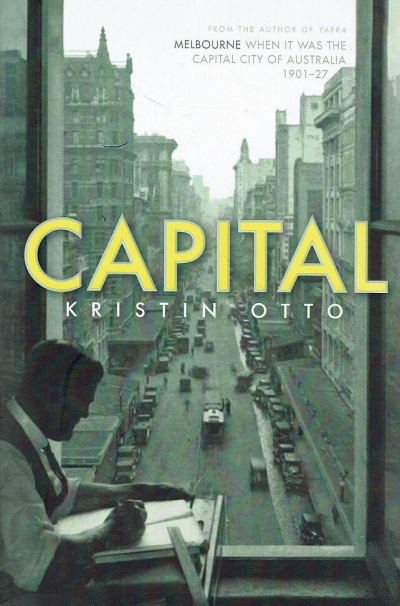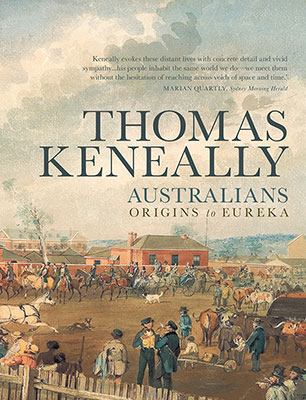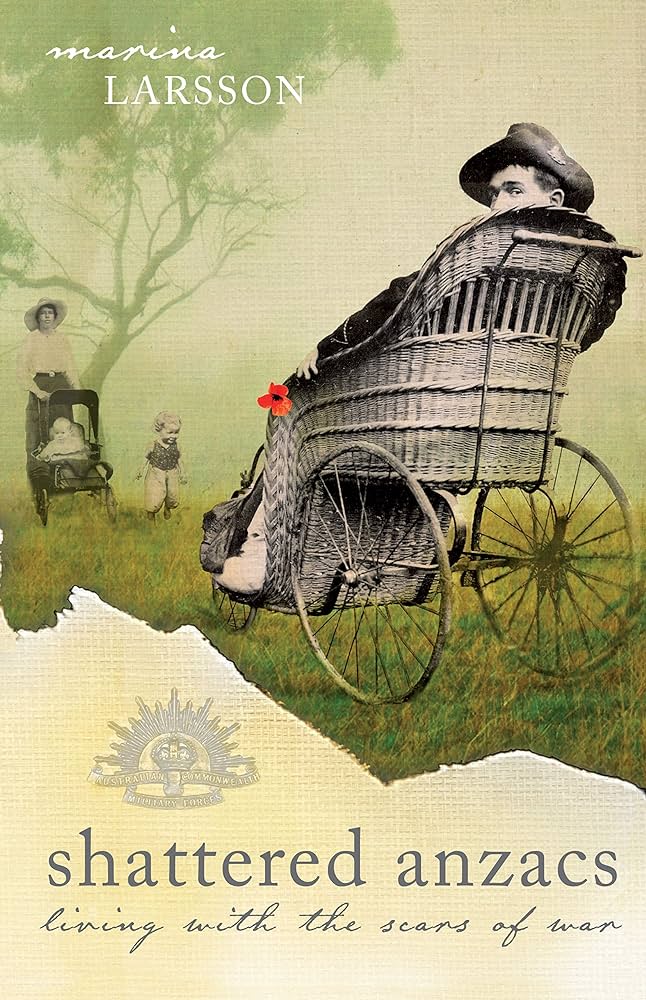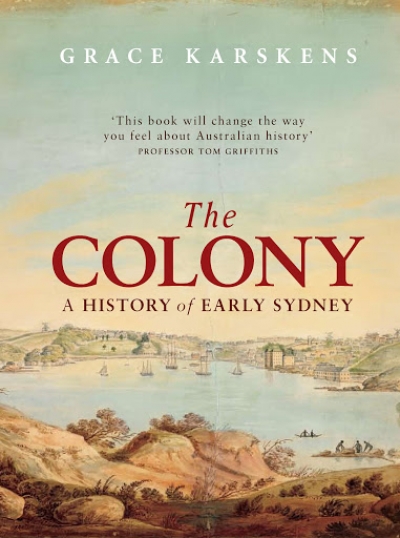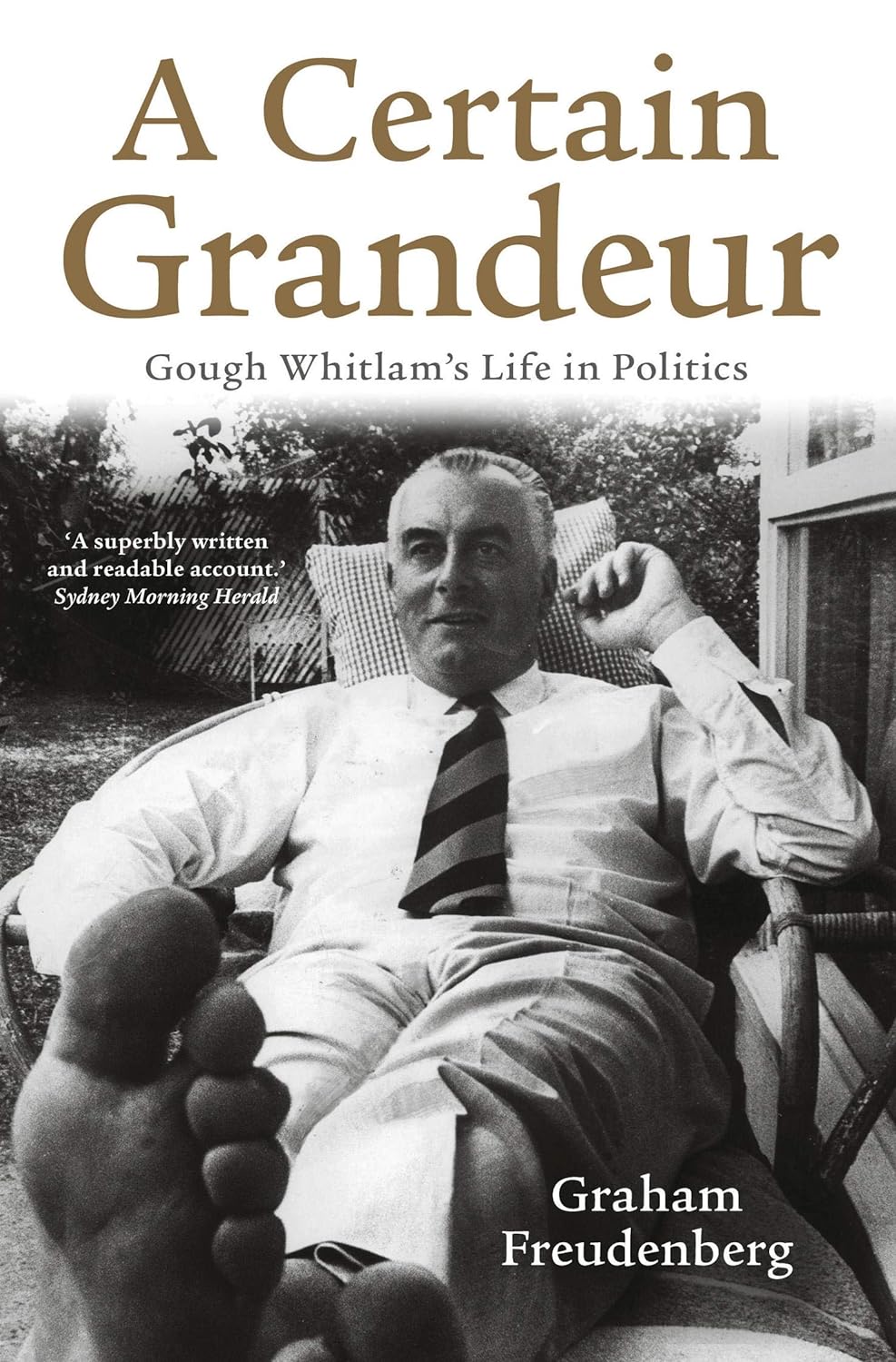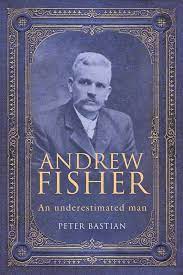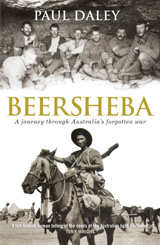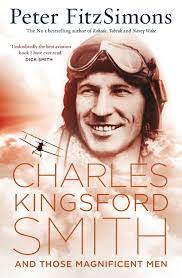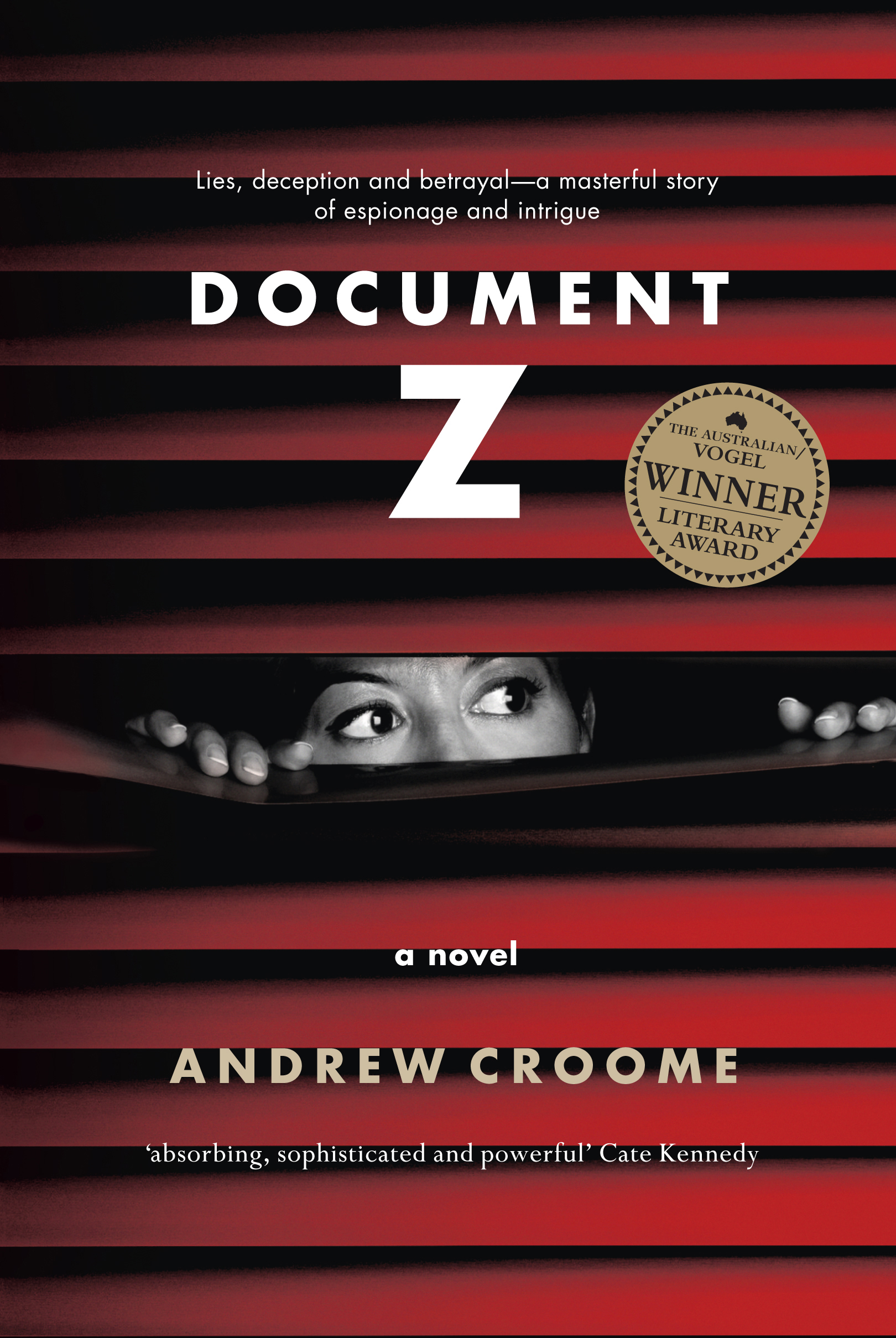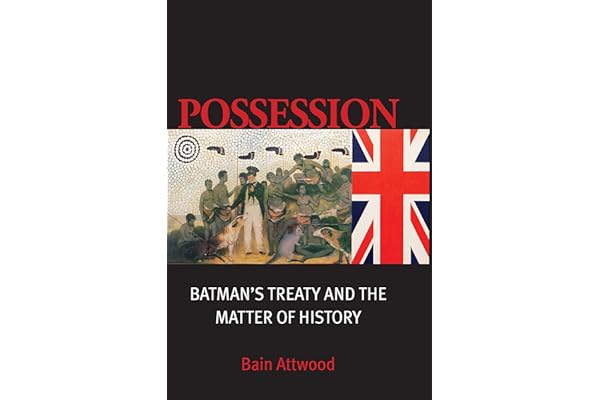Australian History
Capital: Melbourne when it was the capital city of Australia 1901–1927 by Kristin Otto
Academic historians only took to urban history in any systematic way during the 1970s, but Melbourne, regardless of what historians might have had to say about it, has always had a strong sense of its own identity and culture. In the heyday of 1880s ‘Marvellous Melbourne’, journalist Richard Twopeny saw the city as representing ‘the fullest development of Australian civilisation, whether in commerce or education, in wealth or intellect, in manners and customs – in short, in every department of life’. English historian J.A. Froude, staying in style as a guest at Government House, saw Melbourne people as having ‘boundless wealth, and as bound-less ambition and self-confidence’; they were ‘proud of themselves and of what they have done’.
... (read more)Australians: Origins to Eureka, Volume 1 by Thomas Keneally
A number of questions sprang to mind when I heard that Thomas Keneally was writing a three-volume history of Australia from its origins to the present. The first was to wonder how he would fit it into his crowded schedule. Clearly, though, this is not a problem. Keneally has just published another novel. More intriguing was the question as to what Keneally could add to the subject. After all, Australia is not lacking in colonial histories, many written by historians who are skilled writers. As Keneally is primarily a novelist, albeit one with a serious interest in our history and with several non-fiction studies under his belt, would the work reflect the conventions of historical fiction?
... (read more)Shattered Anzacs: Living with the scars of war by Marina Larsson
One of the keenest childhood memories of David Meredith, narrator of George Johnston’s novel My Brother Jack (1964), is of the hall of his parents’ suburban home in Melbourne. It was full of prostheses, the artificial limbs of servicemen returned, maimed, from the Great War. The men are friends and former patients of Meredith’s parents. Her mother was a nurse, her father served in the First AIF. The scant historical regard that has been paid to these damaged men, and to their families, is rectified by Marina Larsson’s brilliant study of Shattered Anzacs. Her subject is the cohort of revenants who returned to Australia after the war – their bodies ruined, shell-shocked, infected with venereal disease and tuberculosis – and the families, institutions and government bureaucracies into whose hands they fell.
... (read more)This is not so much a history of Sydney as a tour with a sensitive and alert guide who knows her history. The site is modern Sydney. Although Sydney was only just beginning to develop suburbs when the book ends – in the 1820s – Karskens tours the whole of the Cumberland Plain, the area that metropolitan Sydney now covers. For the modern suburbs, as everywhere else, Karskens describes the land and how it was used when occupied by the Aborigines and the first Europeans. She points to what remains from earlier times in the routes of roads, remnant vegetation, the built environment and place names.
... (read more)A Certain Grandeur: Gough Whitlam’s life in politics by Graham Freudenberg
Gough Whitlam’s 1972 policy speech, delivered before a crowd of thousands at the Blacktown Civic Centre in a scene that bore a closer resemblance to a pop concert than to a political campaign, is seen as the ultimate articulation of the Whitlam Labor government’s radical program for change. If its chief political architect was Whitlam, its amanuensis was Graham Freudenberg. With Whitlam’s election as leader of the Australian Labor Party in 1967, Freudenberg eagerly joined his staff as press secretary, a position he had previously and less happily held with Arthur Calwell, who was leader from 1960 to 1967.
... (read more)Andrew Fisher fares well in the new Museum of Australian Democracy, at Old Parliament House, Canberra. The entrance to the galleries is framed, on one side, by E. Phillips Fox’s dark 1913 portrait of an imposing and resolute Fisher, in contrast to the garish, spreading corpulence of George Lambert’s 1924 Sir George Reid on the other. Inside, in the procession of prime ministers, Fisher is represented more comprehensively and intimately than his peers. There is his miner’s crib – for this leader of Australia’s first majority Labor government definitely came from the working class – and his fountain pen, presented by his granddaughter to Kevin Rudd (who, the caption reads, is a ‘passionate admirer’ of his Queensland predecessor). Elsewhere in the Museum, in commemorating the suffrage movement, the key exhibit is a replica of the hat worn by Fisher’s wife, Margaret, when she marched beside Vida Goldstein in a London protest for women’s franchise in 1911.
... (read more)Beersheba: A journey through Australia’s forgotten war by Paul Daley
Much Australian writing about military subjects reminds me of the recent film The Curious Case of Benjamin Button, which started in adulthood and rapidly progressed into adolescence. From the evidence of this work, it is showing no signs of growing up. This book purports to have discovered an event about which Australians have remained deeply ignorant for the last ninety years: the charge of the Light Horse at Beersheba in the Middle Eastern war against the Ottoman Empire, in 1917. Only someone long exiled on a desert island could call this event ‘forgotten’. We have had a famous film about it (Forty Thousand Horsemen, 1940), a good book about the Light Horse by Alec Hill (1978), extensive work on the subject by Ian Jones, and a plethora of books by British historians about the Middle Eastern war that include this incident. The author, Paul Daley, must be one of the few Australians who had not heard of it. Is this reason enough to write a book about it? Possibly – but not this book.
... (read more)Charles Kingsford Smith and Those Magnificent Men by Peter FitzSimons
In the epilogue to the latest, massive contribution to his populist and nationalist enterprise, Charles Kingsford Smith and Those Magnificent Men, Peter FitzSimons laments that ‘the true glory days of the pilot are substantially gone’. He charts an heroic, pioneering age of aviation. The ‘magnificent men [in their flying machines]’ include not only the Australians, Kingsford Smith and his partner Charles Ulm, but the German Manfred von Richtofen, the Dutchman Anthony Fokker, the Frenchmen Louis Blériot and Charles Nungesser. Most of them saw service in the first aerial combats, above the trenches of the Western Front in the Great War. Kingsford Smith, a dismounted motor-bike despatch rider at Gallipoli, was accepted into the Royal Flying Corps. He called this ‘the chance of my flying life, and it was a decision I made without a moment’s hesitation’.
... (read more)Devotees of the television program Spooks may find Australian history less than exciting, but the Petrov Affair is surely the exception that confounds the cliché. Its ingredients included the Cold War, espionage, agents, a defection (hugely important propaganda for the Menzies government on the eve of the 1954 federal election) and a charming woman, the defector’s wife, who was unceremoniously hustled on to a waiting aeroplane by beefy officials from the Russian Embassy. The poignancy of Evdokia Petrova’s white shoe lying abandoned on the tarmac as the plane took off was only eclipsed by the drama of the refuelling stop in Darwin, where she was prevailed upon by Australian security to remain in this country with her husband, Vladimir. He was quite clear about his defection; Evdokia, in that pivotal moment and long afterwards, was tormented by uncertainty.
... (read more)Possession by Bain Attwood & Shaking Hands on the Fringe by Tiffany Shellam
I once visited John Batman’s property in north-east Tasmania, happily in the company of a Tasmanian. The guidebook listed it as a heritage site on a public road, but the graded track along the side of a ridge had to be entered by a gate marked ‘Kingston – Private Property’. We drove several kilometres before reaching another gate. We breached this, too. On our left was a nineteenth-century stone cottage incorporated into a weatherboard homestead. On our right was a large shed and stables. A generator puttered away, and music came from the house. We shouted our presence. Only the horse in the stables responded. Clearly, we were not going to find a stall selling Batman memorabilia.
... (read more)

